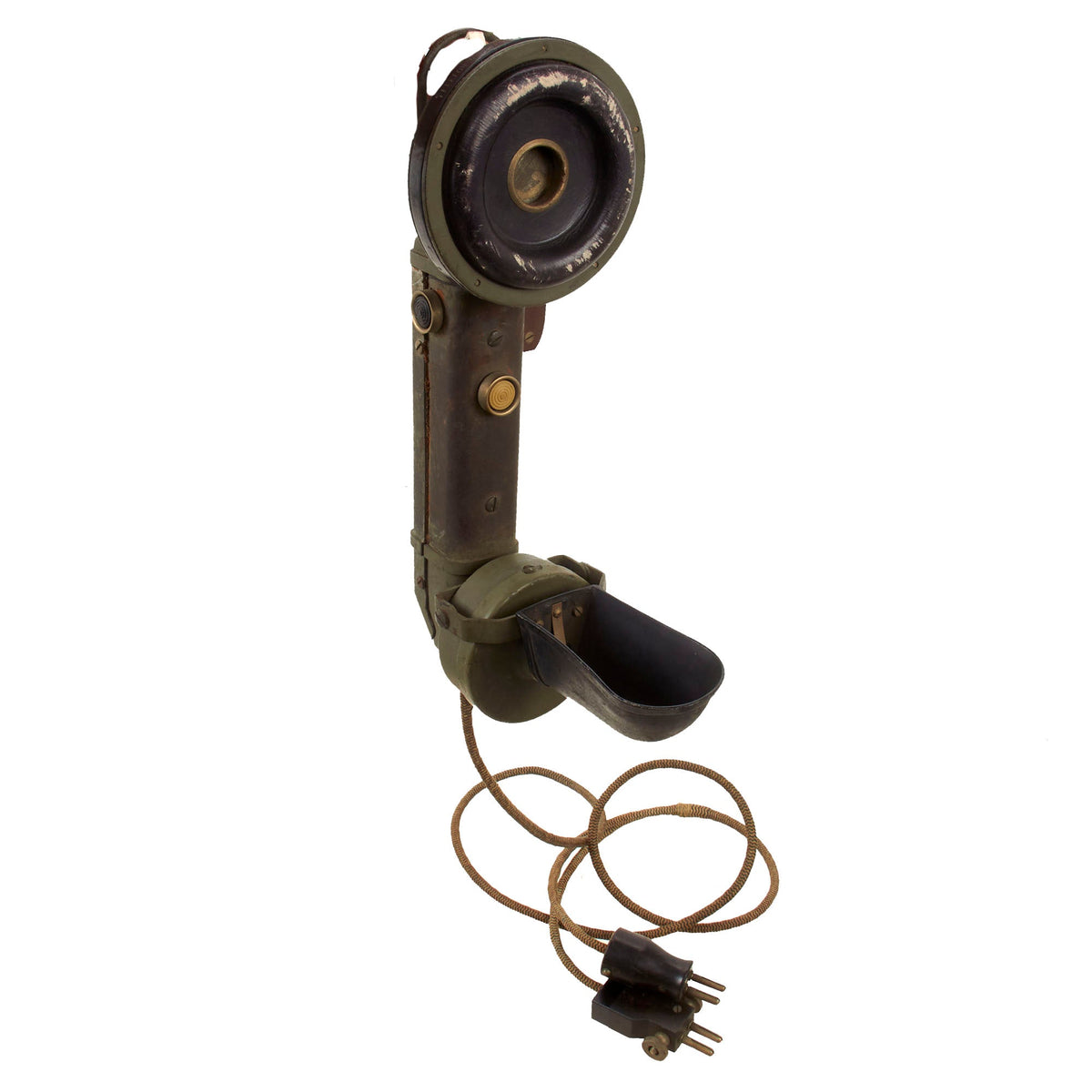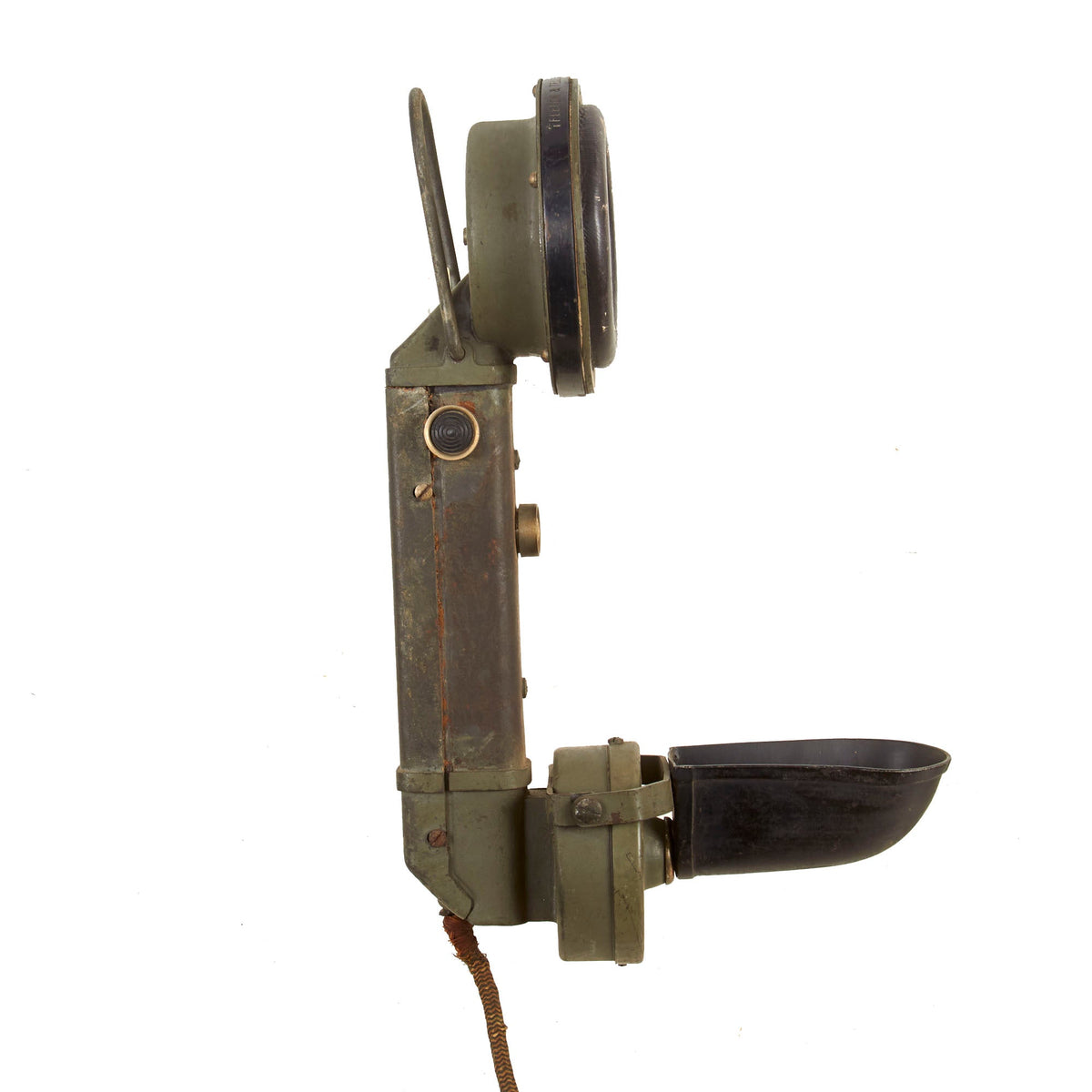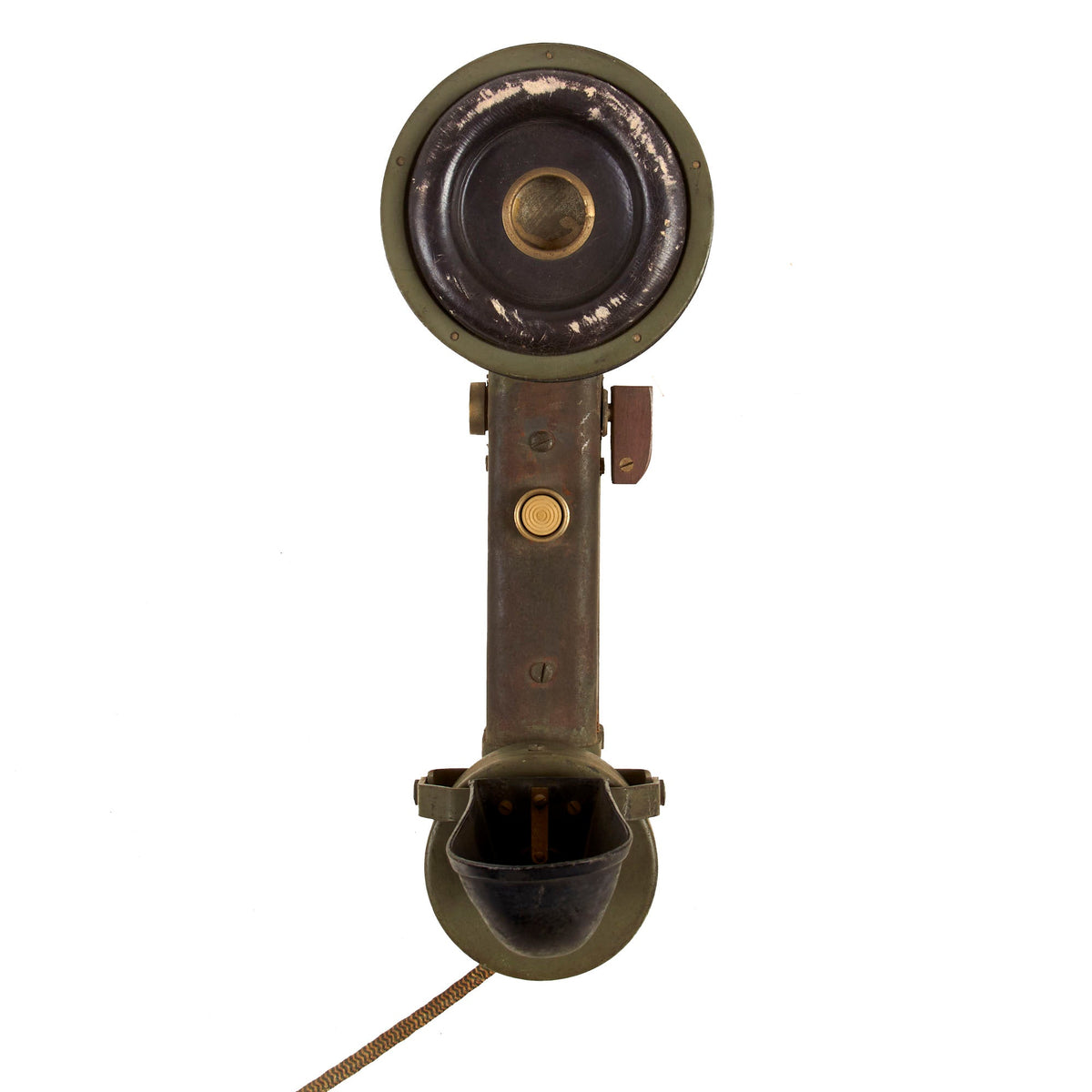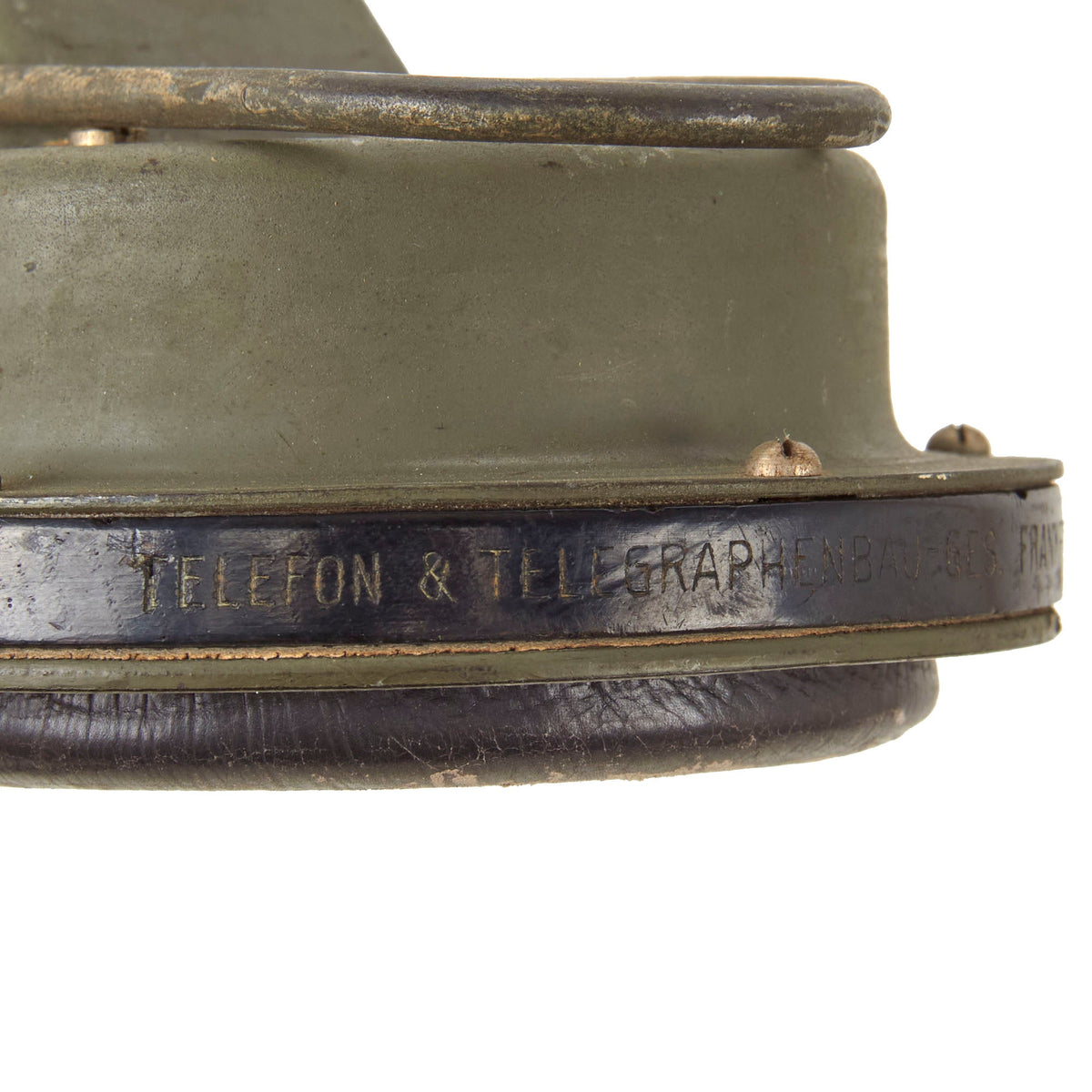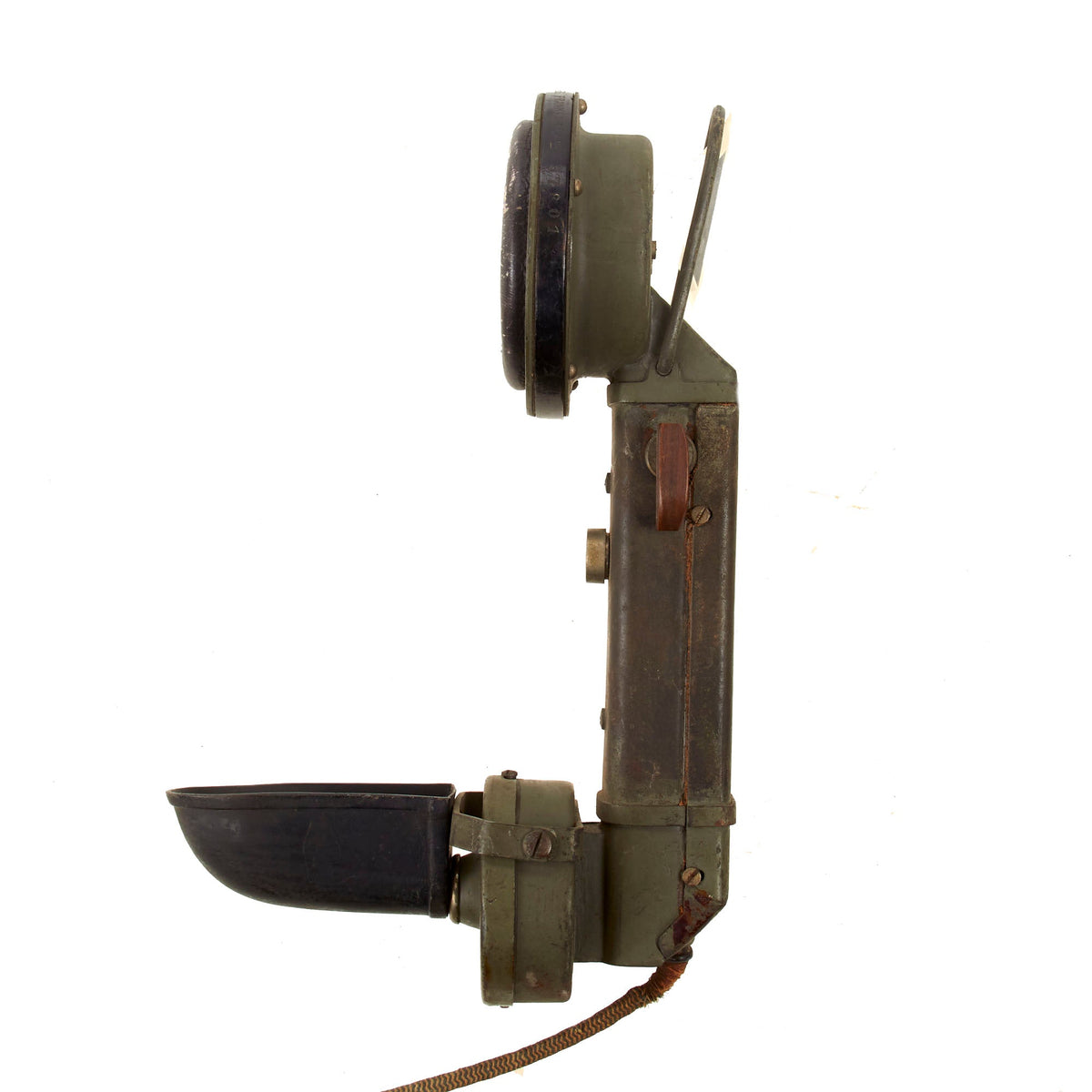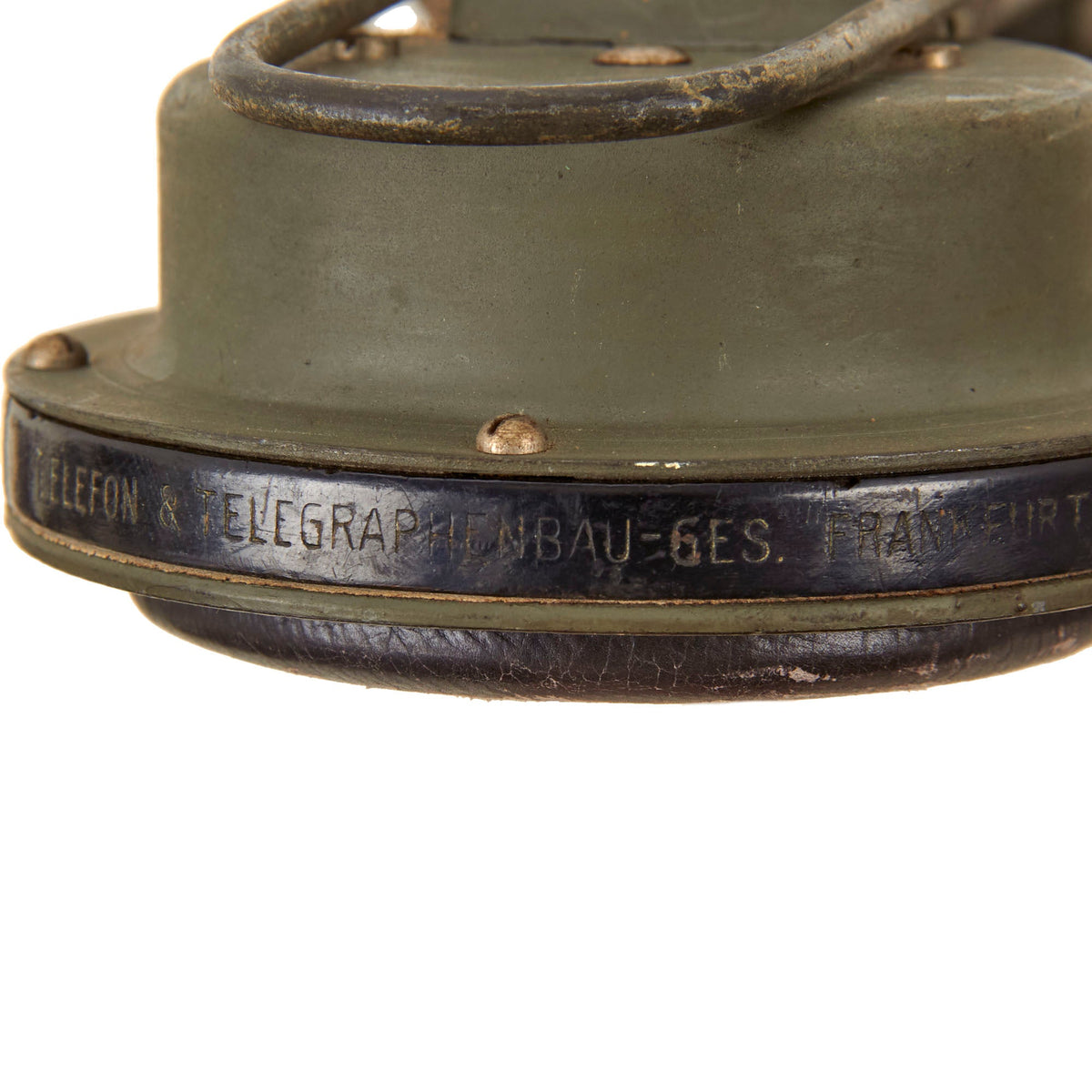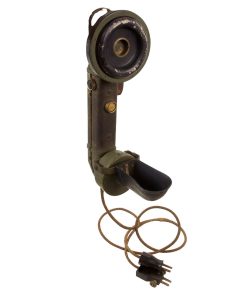Original German WWI Imperial German ArmeeFernsprecher Alter Art Model 1905 Trench Phone Receiver Original Items
$ 295,00 $ 118,00
Original Item: Only One Available. This is a fantastic example of a very hard to find Imperial German Trench Phone Receiver. The receiver still retains nearly all of the original paint and insulated wire with plugs.
In modern warfare communication is an essential part of command and control. From the end of the 19th century, technology started to play an increasingly important role in battlefield communication. By the First World War, extensive use was being made of wire communication and the first –relatively primitive- mobile radio stations came into being.
The development of field telephone equipment started in the late 19th century and by the time of the First World War the basic design features of field telephones were well established with the ArmeeFernsprecher Alter Art and the later FF 16 and 17 models. “FF” stands for “Feld Fernsprecher” or field telephone. These telephones were locally powered by a battery (this mode of operation was called “OB” or “Ortsbatterie Betreib”).
Locally powered networks were commonplace during the early years of the telephone but in the beginning of the 20th century, public networks increasingly used central powered systems (the power for the microphones is provided over the phone line from a central power supply. In Germany this was called a “Zentralbatterie Betrieb” (ZB) system. For field use however, locally powered telephones remained the norm of many years.
Telephones had been added in the early 1880’s and by the time the First World War started, they were the primary source of communication for the field army. As the war progressed various models were introduced, including civilian patterns, which the army was to adopt.
This example here is one of the three main patterns of handsets for those devices. In 1914 the Armeefernsprecher a.A. (alter Art) was in use. It has an aluminum frame, rounded handle and a pressed felt pad covering the listening disk. Early versions had a hard leather speaking cup, which was transitioned to a steel version like this example has. It was used in conjunction with the Feldfernsprecher a.A. (telephone box) and the Armeesprechbatterie a.A. (battery box). This handset had a black leather carrying case with an over the shoulder strap. Unfortunately the original carry case has been lost to time and is no longer with this example.
During WWI the German Imperial Army used two principally different lines of field telephones for its infantry units. A fairly heavy Feldfernsprecher or “Field Telephones” were in use by signalers in the 2nd and 3rd line positions or at headquarters while each infantry regiment in the front line was equipped by several more lightweight Armeefernsprechgerät or “Army Field Telephones”.
On top of the push-to-talk key, “Armeefernsprechgerät alter Art” has two round shaped keys, one at each side of the telephone body. White key on the right side was Calling Button (Summerknopf) while black key on the left side allowed to increase temporarily, the strength of incoming signals. All 3 buttons are present and still function in the sense of being able to be pressed.
Truly a wonderful example of an early source of communication equipment. Comes ready to display!
Fast Shipping with Professional Packaging
Thanks to our longstanding association with UPS FedEx DHL, and other major international carriers, we are able to provide a range of shipping options. Our warehouse staff is expertly trained and will wrap your products according to our exact and precise specifications. Prior to shipping, your goods will be thoroughly examined and securely secured. We ship to thousands clients each day across multiple countries. This shows how we're dedicated to be the largest retailer on the internet. Warehouses and distribution centres can be located throughout Europe as well as the USA.
Note: Orders with more than one item will be assigned a processing date depending on the item.
Before shipping before shipping, we'll conduct a thorough inspection of the items you have ordered. Today, the majority of orders will be delivered within 48 hours. The delivery time will be between 3-7 days.
Returns
The stock is dynamic and we cannot completely manage it because multiple stakeholders are involved, including our factory and warehouse. So the actual stock may alter at any time. It's possible that you may not receive your order once the order has been made.
Our policy is valid for a period of 30 days. If you don't receive the product within 30 days, we are not able to issue a refund or an exchange.
You can only return an item if it is unused and in the same state as the day you received it. You must have the item in its original packaging.
Related products
Uncategorized
Uncategorized
Uncategorized
Uncategorized
Uncategorized
Uncategorized
Angolan Rebel 1970s era 60mm Inert Display Mortar from Angolan Civil War Original Items
Uncategorized
Uncategorized
Uncategorized
Band of Brothers ORIGINAL GERMAN WWII Le. F.H. 18 10.5cm ARTILLERY PIECE Original Items
Uncategorized
Uncategorized
Uncategorized
Uncategorized
Armored Burgonet Helmet & Polearm from Scottish Castle Leith Hall Circa 1700 Original Items
Uncategorized
Uncategorized
Uncategorized
Uncategorized
Armoured Fighting Vehicles of the World: AFVs of World War One (Hardcover Book) New Made Items
Uncategorized
